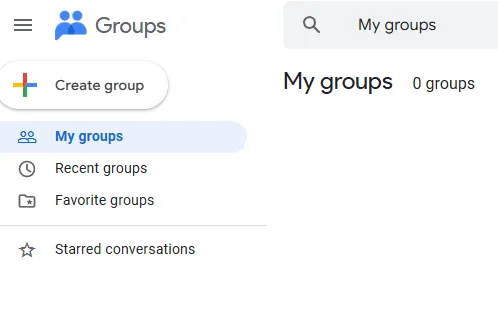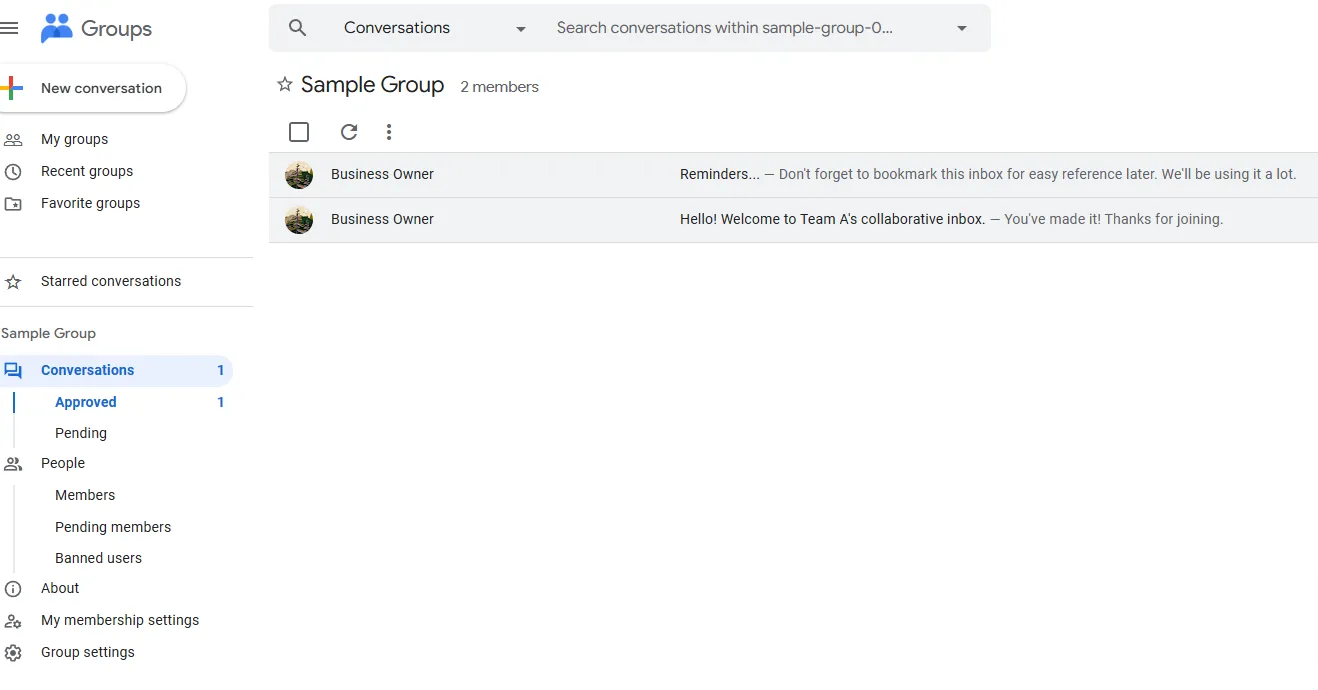How To Use Google Groups as a Collaborative Inbox

A collaborative inbox can help your team communicate more efficiently and easily track emails between team members. Using Google Groups as a collaborative inbox, team members can assign, track, and resolve inquiries in one location, offering transparency and organization for incoming and outgoing messages.
In this article:
- What Are the Benefits of a Collaborative Inbox?
- How To Use Google Groups as a Collaborative Inbox
- Google Groups Collaborative Inbox Alternative
- Frequently Asked Questions
What Are the Benefits of a Collaborative Inbox?

A collaborative inbox — whether you use Google Groups or another platform to create yours — centralizes emails for an entire group, allowing everyone within that group to read and respond to its messages. This type of communication system can help employees of a team track all team communications or customer support agents view all customer communications in one space, reducing the potential for emails to get lost or go unanswered.
A collaborative inbox also increases accountability and support. Team members can comment on messages to pull others into a conversation, for example. Members of the collaborative inbox can also assign emails to other team members, ensuring that nothing gets missed along the way.
How to Use Google Groups as a Collaborative Inbox
Follow the steps below to set up a group in Google and use a collaborative inbox for that group.
Creating a Google Group

Creating a Google Group
Visit Groups.Google.com and make sure you’re signed into the Google account you want to create your group in. Click the ‘+Create group’ button to start setting up a group.
In the box that pops up, enter a name for the group and a group email. This email address is where the collaborative inbox will be.
You can send an email to this group email from another address to email the entire group. You can also add a description for the group, which is helpful if you have multiple groups set up in your account.
Click ‘Next’ to adjust the settings for the group. You can change who can search for and join the group, who can view members, and who can post and view conversations.
Adding Members to Your Group
Once you’ve finished adjusting settings, you’ll begin adding people to your group in the box that follows. You’ll have the option to add people to the group directly or send invites so people can choose whether to join.
To add members, start typing their name or email address into the box and choose the correct email from the drop-down menu. You can add all members at the same time by repeating this process within the same box. Write an invitation or welcome message, and click the ‘Create group’ button to start the group.
Using the Collaborative Inbox
In your list of groups, click the name of the group you’d like to work with. This brings you to your collaborative inbox, which should look similar to this:

Using the collaborative inbox
To add a new post to the group, click ‘+New conversation’, which brings up a pop-up box similar to composing an email in Gmail. You can also view all approved and pending conversations, manage members, and change membership and group settings from the left sidebar.
Your inbox functions much like a Gmail inbox. The main difference is that all members can view and manage each conversation from within the same inbox, depending on their privacy settings.
Google Groups Collaborative Inbox Alternative
You will love the improved replying experience we rolled out recently!
1. Improved drag and drop for images and other files.
2. New options for formatting code blocks.
3. Alignment toolbar for images dropped in text.
4. More reliable drafts feature.Thanks to @ckeditor for v5! pic.twitter.com/jzIrd5fvbZ
— SupportBee (@supportbee) September 9, 2024
If you’re looking for more control over support ticketing or customer service management conversations, SupportBee offers numerous benefits. For example, SupportBee integrates with other tools such as task and calendar management tools, notification platforms like Slack, project management tools, and more. These integrations allow for seamless information sharing between applications, simplifying your team’s workflow.
Like a Google Groups collaborative inbox, it allows support agents to work together to answer customer questions and provide quick and reliable solutions. However, SupportBee offers more organization, prioritization, and collaboration with its shared inbox, complete with automated features and extensive reports to improve workflows.
Start a free 14-day trial of SupportBee.
Frequently Asked Questions
What are the disadvantages of using Google Groups as a collaborative inbox?
Despite its ease of use, Google Groups may not be the solution for all teams needing a shared inbox. For customer support teams, for example, Google Groups doesn’t offer intuitive syncing of emails.
A team member must instinctively remember to CC the shared inbox’s email when they reply to a customer’s email for the reply to show in the shared inbox. This could lead to multiple replies to the same query.
Additionally, Google Groups collaborative inboxes don’t offer data analytics, which could be a drawback for businesses reliant on communication data to make informed business decisions.
Is Google’s collaborative inbox free?
Yes, Google’s collaborative inbox is free for basic users. If you want a business-focused collaborative inbox account, you’ll need to subscribe to Google Workspace, with plans starting at $6 per month, per user.
Is there another way to send group emails with Google besides a collaborative inbox?
Yes — rather than using Google Groups to create a collaborative inbox for a group, you can create a group using your Gmail contacts. To do this, add contacts to a group in Gmail, and label your new group. Then, you can send emails directly to that group by adding the label to the ‘To’ field when composing an email.